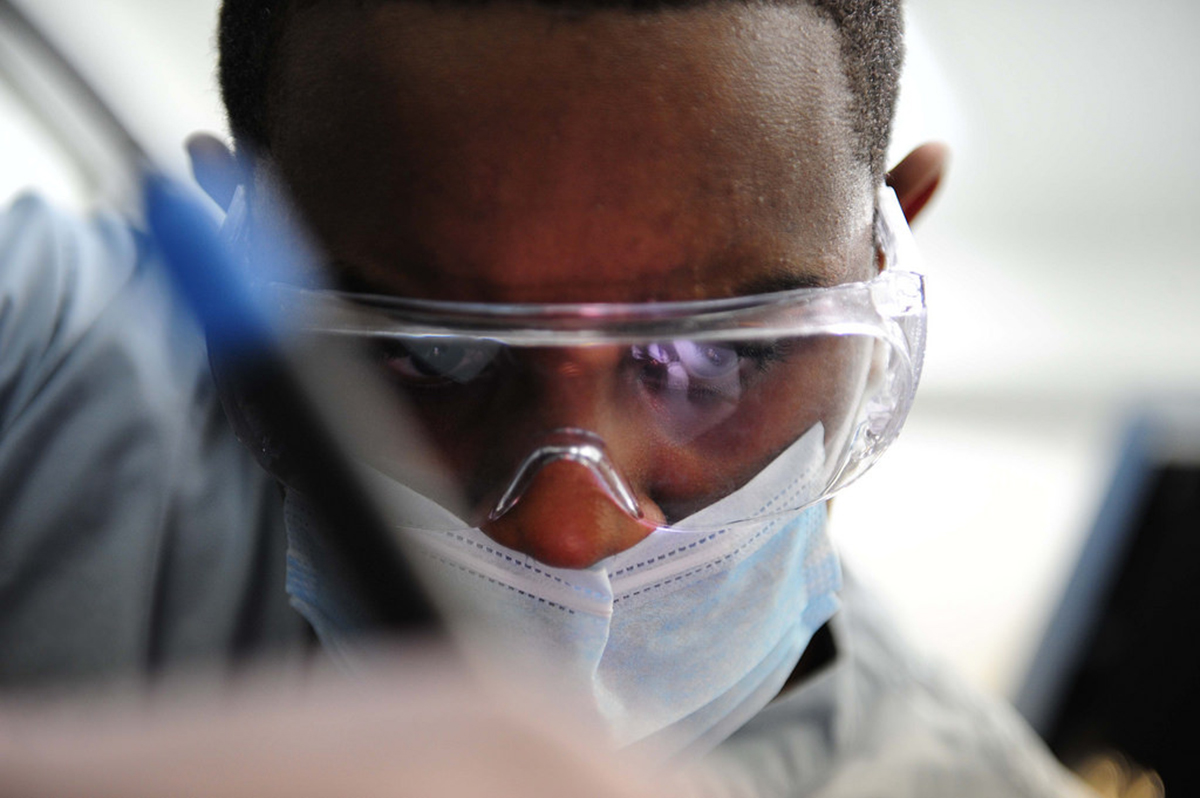Neurosurgery is the surgical discipline that involves the diagnosis, prevention, management and rehabilitation of conditions that affect the central nervous system, which includes the brain, cranial nerves and spinal cord, the peripheral nervous system, which includes the peripheral nerves, and the autonomic nervous system, which includes the sympathetic and parasympathetic nerve pathways.

Training
In order to specialise in neurosurgery, a doctor has to complete their 4-5 year undergraduate training and receive the degree in bachelor of medicine and surgery (M.B.B.S. or M.B.,Ch.B). Thereafter a 1-2 year internship phase needs to be completed before being able to apply for a specialist post. If a doctor is accepted into the specialty of neurosurgery, they will have to complete a 7-8 year residency programme in this discipline. This is by far the longest residency programme for any medical or surgical discipline if one excludes fellowship training for sub-specialties.
Fellowships
If a neurosurgeon wants to further specialise in sub-disciplines of neurosurgery, then this will entail a further 1-2 years of training. The sub-specialties of neurosurgery include the following:
- Vascular neurosurgery
- Stereotactic neurosurgery
- Epilepsy surgery - this includes performing procedures such as total or partial corpus callosotomy (removing all of or a part of the corpus callosum), total or partial lobectomy (the removal of all of or part of one of the lobes of the brain) or even hemispherectomy (removal of one of the cerebral hemispheres of the brain) to stop or decrease seizure activity and spread. The latter two procedures are also used in oncology neurosurgery (rarely) or to manage severe trauma, such as a gunshot or stab wound to the brain.
- Spinal neurosurgery
- Skull base surgery
- Oncological neurosurgery, that also includes paediatric oncological neurosurgery.
- Peripheral nerve surgery
- Paediatric neurosurgery
Neurosurgery procedures
Conventional open surgery - the neurosurgeon will open the skull and creates a large opening to gain access to the brain. This technique is traditionally used in trauma or emergency situations.
Microsurgery - this method is used in procedures such as laminectomy, microdiscectomy and artificial disc replacement.
Stereotaxy - this is used to approach a very small target in the brain through a small opening by making used of image guiding systems. The combination of stereotactic and open surgery, used in managing intraventricular haemorrhages, can be very successfully.
Minimally invasive endoscopic surgery - this techniques is used when operating on pathologies such as pituitary tumours and when repairing cerebrospinal fluid leaks.
Stereotactic radiosurgery - together with radiation oncologists, neurosurgeons use this method to manage conditions such as intracranial tumours and arterio-venous malformations (AVMs).
Endovascular neurosurgery - endovascular image guiding is used to manage issues such as AVMs, aneurysms, carotid stenosis, spinal malformations and strokes. Procedures such as stenting, angioplasty and diagnostic angiography are regarded as endovascular procedures.
Ventriculo-Peritoneal Shunt (VP Shunt) - this is performed on children in cases of congenital hydrocephalus, and in adults who are diagnosed with normal pressure hydrocephalus (NPH).
READ 8 Things They Won’t Tell You about Medical School
Spinal neurosurgery - pathologies that are managed here include compression of the spinal canal due to spinal disc degeneration or trauma. Subsequently, disc herniations may occur and a procedure known as a discectomy will have to be performed.
Surgery of the peripheral nervous system - procedures such as peripheral nerve transposition and carpal tunnel decompression are performed.
Radiologically assisted spinal surgery - this entails performing minimally-invasive procedures such as kyphoplasty or vertebroplasty to treat spinal fractures.
Surgery for chronic pain - this involves implantation of stimulators deep in the brain, the spinal cord or peripheral areas to offer pain relief.
Daily Schedule Of A Neurosurgeon
Neurosurgeons will attend to their hospital patients 1-2 times a day and they may also have ICU patients that they will have to manage. Daily orders are given to the nursing staff regarding these patients until they are ready to be discharged or transferred to rehabilitation facilities that will manage the patient further. Neurosurgeons may also be asked to give their opinion on other doctors' patients, such as neurologists or orthopaedic surgeons.

Neurosurgeons will also be on call for the hospital they work at, to manage emergency cases, and this may occur 1-2 times a week. If a neurosurgeon in on call over the weekend, then they will be responsible for the care of their patients and the patients of their colleagues that have discussed patients with them.
Monday
The neurologist will use a Monday to organise their week. They will go through their surgical lists, finalise patient consultations, make time available for emergency consultations as well as deal with administrative issues such as meetings with hospital management and surgical reps.
Patients consultation is done on this day and further tests and investigations will be done where the patient will be followed up over the next couple of days. Patients could be referred to physiotherapists and/or biokinetisists for conservative therapy, or they may need surgical intervention. These patients will then have a surgical date booked once they have received information about their diagnosis and what surgery needs to be performed.
Tuesday
Patients will be scheduled for surgery on this day and the neurosurgeon may perform spinal procedures such as discectomies, laminectomies, kyphoplasties or vertebroplasties. These operations may be done as open or minimally-invasive procedures.
These procedures are quite time consuming. Therefore, neurosurgeons may end up performing less surgeries than other disciplines and this will mean that their daily schedule will consist of spending a lot of their time in the operating room.
Wednesday
Wednesdays can also be surgical days where the neurosurgeon may be performing intracranial surgeries such as resecting tumours, fixing cerebrospinal leaks, repairing AVMs and placing VP shunts. Patient investigations will be followed up on a daily basis since a neurosurgeon will see patients that need MRI scans done in order to assess their neurological anatomy.
Thursday
The specialist may consult and manage patients on this day, but may be busy in the operating room. Thursdays can be used to perform peripheral nerve surgeries such as releasing entrapped nerves.
If the doctor is involved with the academic programme of the neurosurgical department of the local medical school then they may offer training to under- and post-graduates.
Friday
The mornings are used to perform surgical procedures and the afternoon is then used to sort out any unfinished administrative issues or duties. The neurosurgeon will also check their surgical list in advance for the next week.
- en.wikipedia.org/wiki/Neurosurgery
- Photo courtesy of usstheodoreroosevelt: www.flickr.com/photos/usstheodoreroosevelt/10812487743/
- Photo courtesy of shutterstock.com
- Photo courtesy of usstheodoreroosevelt: www.flickr.com/photos/usstheodoreroosevelt/10812487743/


Your thoughts on this